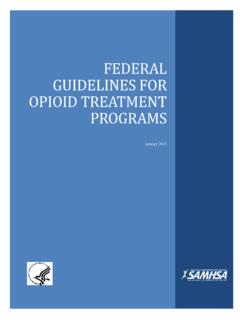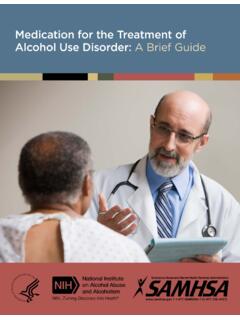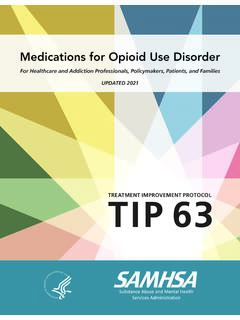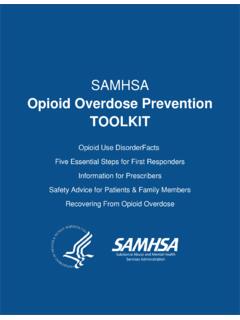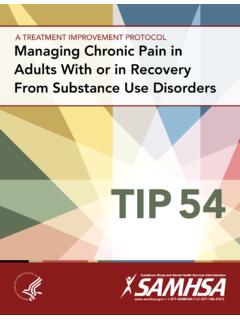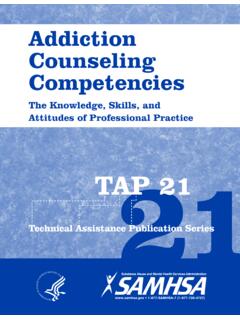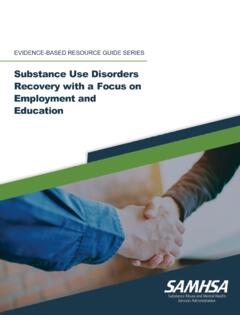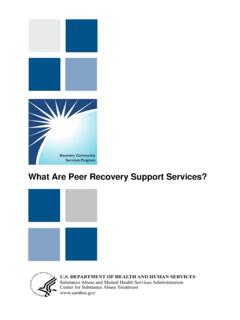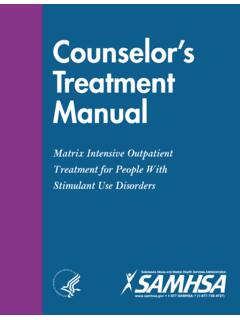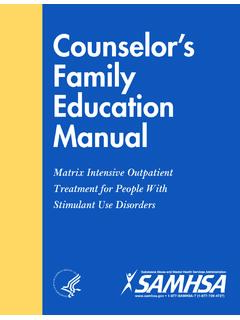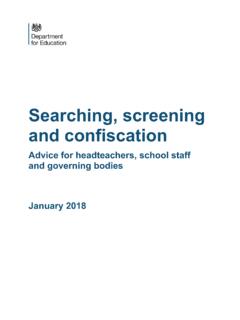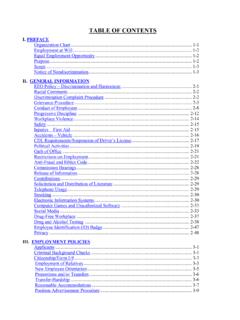Transcription of EVIDENCE-BASED RESOURCE GUIDE SERIES
1 EVIDENCE-BASED RESOURCE GUIDE SERIES Reducing Vaping Among Youth and Young Adults Reducing Vaping Among Youth and Young Adults Acknowledgments This report was prepared for the Department of Health and Human Services, Substance Abuse and Mental Health Services Administration (SAMHSA) under contract number HHSS283201700001/ 75S20319F42002 with SAMHSA. Donelle Johnson served as contracting officer representative. Disclaimer The views, opinions, and content of this publication are those of the authors and do not necessarily reflect the views, opinions, or policies of SAMHSA.
2 Nothing in this document constitutes a direct or indirect endorsement by SAMHSA of any non-federal entity s products, services, or policies, and any reference to non-federal entity s products, services, or policies should not be construed as such. Public Domain Notice All material appearing in this publication is in the public domain and may be reproduced or copied without permission from SAMHSA. Citation of the source is appreciated. However, this publication may not be reproduced or distributed for a fee without the specific, written authorization of the Office of Communications, SAMHSA.
3 Electronic Access This publication may be downloaded from Recommended Citation Substance Abuse and Mental Health Services Administration (SAMHSA): Reducing Vaping Among Youth and Young Adults. SAMHSA Publication No. PEP20-06-01-003. Rockville, MD: National Mental Health and Substance Use Policy Laboratory, Substance Abuse and Mental Health Services Administration, 2020. Originating Office National Mental Health and Substance Use Policy Laboratory, Substance Abuse and Mental Health Services Administration, 5600 Fishers Lane, Rockville, MD 20857, Publication No.
4 PEP20-06-01-003. Nondiscrimination Notice SAMHSA complies with applicable federal civil rights laws and does not discriminate on the basis of race, color, national origin, age, disability, or sex. SAMHSA cumple con las leyes federales de derechos civiles aplicables y no discrimina por motivos de raza, color, nacionalidad, edad, discapacidad o sexo. Reducing Vaping Among Youth and Young Adults Acknowledgments I MESSAGE FROM THE ASSISTANT SECRETARY FOR MENTAL HEALTH AND SUBSTANCE USE, DEPARTMENT OF HEALTH AND HUMAN SERVICES As the first Department of Health and Human Services Assistant Secretary for Mental Health and Substance Use at the Substance Abuse and Mental Health Services Administration (SAMHSA), I am pleased to present this new RESOURCE : Reducing Vaping among Youth and Young Adults.
5 In response to the charge of the 21st Century Cures Act to disseminate information on EVIDENCE-BASED practices and service delivery models, the National Mental Health and Substance Use Policy Lab has developed the EVIDENCE-BASED RESOURCE GUIDE SERIES focused on the prevention and treatment of substance use disorders and mental illnesses. With this GUIDE , SAMHSA s goal is to inform school administrators, community leaders, educators, parents, policy makers, and others of the rising rates of vaping among youth and the need for targeted prevention programs and policies, as well as a comprehensive vaping reduction strategy.
6 Vaping among youth is a serious public health issue. In the past decade, vaping has increased among all age and demographic groups and is more popular than traditional cigarettes among high school students. According to the joint Food and Drug Administration/Centers for Disease Control and Prevention 2019 National Youth Tobacco Survey, 28 percent of high school students and 11 percent of middle school students reported using e- cigarettes in the previous 30 days. E-cigarette use among teens doubled from 2017 to Adverse health events have heightened the short- and long-term risks associated with vaping and the need for prevention efforts.
7 This GUIDE discusses effective programs and policies to prevent vaping among youth and young adults, challenges to reducing e-cigarette use and vaping, and program and policy implementation strategies that can be used to address those challenges. I encourage you to use this GUIDE to identify prevention programs and policies you can implement to address vaping among youth in your communities. Elinore F. McCance-Katz, MD, PhD Assistant Secretary for Mental Health and Substance Use Department of Health and Human Services 1 Cullen, K. A., Gentzke, A.
8 S., Sawdey, M. D., Chang, J. T., Anic, G. M., Wang, T. W., Creamer, M. R., Jamal, A., Ambrose, B. K., & King, B. A. (2019). e-Cigarette Use Among Youth in the United States, 2019. JAMA, 322(21), 2095 2103. Reducing Vaping Among Youth and Young Adults Message from Assistant Secretary for Mental Health and Substance Use II FOREWORD EVIDENCE-BASED RESOURCE GUIDE SERIES Overview The Substance Abuse and Mental Health Services Administration (SAMHSA), and specifically, its National Mental Health and Substance Use Policy Laboratory (Policy Lab), is pleased to fulfill the charge of the 21st Century Cures Act to disseminate information on EVIDENCE-BASED practices and service delivery models to prevent substance misuse and help people with substance use disorders (SUD), serious mental illnesses (SMI), and serious emotional disturbances (SED) get the treatment and support they need.
9 Treatment and recovery for SUD, SMI, and SED can vary based on a number of geographic, socio-economic, cultural, gender, race, ethnicity, and age-related factors, which can complicate evaluating the effectiveness of services, treatments, and supports. Despite these variations, however, there is substantial evidence to inform the types of resources that can help reduce substance use, lessen symptoms of mental illness, and improve quality of life. The EVIDENCE-BASED RESOURCE GUIDE SERIES is a comprehensive set of modules with resources to improve health outcomes for people at risk for, with, or recovering from mental and/or substance use disorders.
10 It is designed for practitioners, administrators, community leaders, and others considering an intervention for their organization or community. A priority topic for SAMHSA is preventing vaping among youth. This GUIDE reviews the related literature and science, examines emerging and best practices, identifies gaps in knowledge, and discusses challenges and strategies for implementation. Expert panels of federal, state, and non-governmental participants provide input for each GUIDE in this SERIES . The panels include accomplished scientists, researchers, service providers, community administrators, federal and state policy makers, and people with lived experience.
